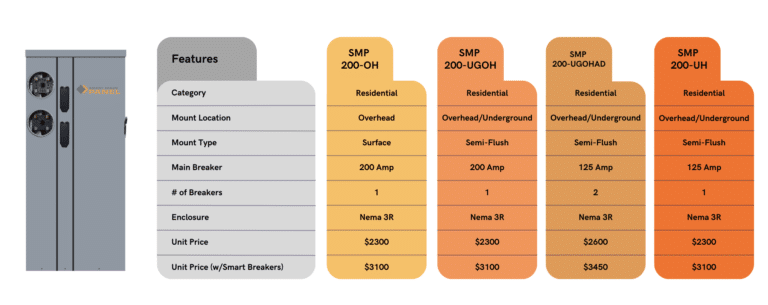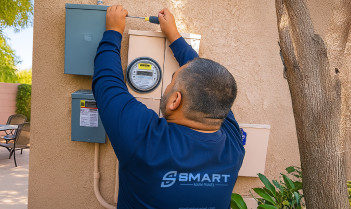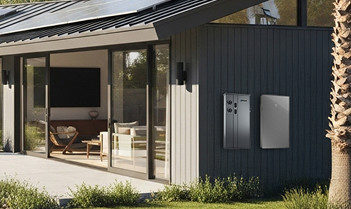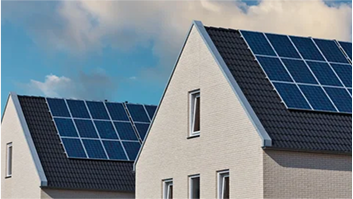
Date
Six Essential UI Design Practices for Smart Panels
Six Essential UI Design Practices for Smart Panels
The Smart Main Panel is an energy-efficient smart home panel that aims to optimize the use of electricity in households. It offers features such as real-time monitoring, integration with other smart devices, automation, and safety sensors. The user interface (UI) design plays a crucial role in the effectiveness of these features and the overall user experience. In this article, we will explore six essential UI design practices for smart panels that enhance energy efficiency, safety, and user experience.

1. Intuitive Navigation
A key aspect of UI design for smart panels is intuitive navigation. Users should be able to easily find and access the various features and functionalities of the panel. Clear labels, icons, and menus can help users navigate through different screens and functions smoothly. The navigation should be structured logically to guide users intuitively. Additionally, incorporating gestures or touch-based interactions can enhance the user experience, making it more intuitive and user-friendly.
2. Informative Visualizations
Smart panels provide users with real-time energy consumption data and insights. To make this information meaningful and actionable, UI designers need to create informative visualizations. Graphs, charts, and diagrams can be used to display energy usage patterns, trends, and comparisons. Color coding, icons, and animations can be employed to highlight important information and make it more visually appealing. By presenting data in a visually appealing and comprehensible manner, users can easily understand their energy consumption and take necessary steps to reduce it.
3. Customizable Dashboard
A customizable dashboard allows users to personalize their Smart Main Panel interface according to their preferences and needs. UI designers should provide options to rearrange and resize widgets or modules on the dashboard. This way, users can prioritize the information they want to see at a glance, such as real-time energy consumption, device status, or weather updates. Customizability enhances the usability and user experience by allowing users to create a layout that suits their specific requirements.
4. Seamless Device Integration
The integration of the smart panel with other devices in the smart home ecosystem is a crucial aspect of UI design. The interface should seamlessly connect and communicate with devices such as thermostats, lighting systems, and appliances. This allows users to control and monitor various devices from a centralized interface, leading to better coordination and optimization of energy consumption. UI designers need to ensure that the integration process is intuitive, hassle-free, and user-friendly.
5. Error Prevention and Feedback
UI design for smart panels should focus on error prevention and providing clear feedback. Clear error messages should be displayed when there are issues or failures in device communication or functionality. Additionally, the interface should incorporate preventive measures to minimize errors. For example, disabling certain settings when they are not relevant or applicable, or providing warning messages before performing irreversible actions. Feedback mechanisms such as visual cues, sounds, or vibrations can also enhance the user experience by confirming successful actions or indicating errors.
6. Responsive Design
With the increasing use of mobile devices, responsive design has become essential in UI design. Smart panel interfaces should be responsive and adapt to different screen sizes and orientations seamlessly. Whether users are accessing the panel through a smartphone, tablet, or computer, the interface should provide the same level of functionality and user experience. UI designers should ensure that buttons, text, and graphics are easily readable and accessible across various devices.
By following these six essential UI design practices, the Smart Main Panel can offer an enhanced user experience, making it easier for users to manage their energy consumption and achieve energy efficiency goals. Intuitive navigation, informative visualizations, customizable dashboards, seamless device integration, error prevention and feedback, and responsive design are key factors in designing a user-friendly and effective smart panel interface.
Frequently Asked Questions
What is a smart panel?
How can a smart panel help with energy efficiency?
What are the six essential UI design practices for smart panels?
The six essential UI design practices for smart panels are: consistency in design, simplicity in layout, clear visual hierarchy, intuitive navigation, effective use of color and typography, and responsiveness across different device sizes.
How does a consistent UI design benefit the usability of smart panels?
Consistent design helps users to quickly understand how to interact with the interface. It makes it easy for them to predict what each control will do and reduces the learning curve when interacting with different sections of the dashboard.
Why is simplicity important in the layout of a smart panels UI Design?
Simplicity ensures that users can easily understand and navigate through data presented on the panel without feeling overwhelmed. This involves minimizing clutter, grouping related items together, and avoiding unnecessary elements that could distract from important information.
How does an effective use of color and typography contribute to a successful Smart Panel UI Design?
Effective use of color can help highlight critical information or draw attention to specific functions or buttons while good typography enhances readability. Both factors play crucial role in ensuring data is easily understandable at a glance.
How does making Smart Panels responsive across different device sizes improve user experience?
Responsiveness ensures that your dashboard displays correctly regardless of the screen size or resolution of the user’s device. This means they can access and interpret their energy data whether on a computer, tablet or mobile phone which greatly enhances user experience.


